Ancient Capitals Overland--Nara, Japan and the Sacred Deer
On the first day of our three-day overland tour, Ancient Capitals, we traveled from Osaka to Nara, where we visited the Kasuga Taisha Shrine and encountered the sacred deer.
On our second morning in Osaka, Sherpa and I, along with thirty-one other guests, disembarked from the Seven Seas Mariner to begin our three-day, two-night overland excursion, "Ancient Capitals." We met our two guides, Mimi-san and Yumi-san, and their assistant. Then we were on our way!
After disembarking from the ship in Osaka, we traveled by coach to Nara, Japan’s first capital city. There, we visited the Kasuga Taisha shrine in Nara Park. The deity enshrined there is said to have ridden to Nara on a deer. Therefore, these animals are considered sacred and are protected. There are about 1600 deer in the park.
Everywhere we walked, deer rested alongside the path or ambled through the trees. They were aware of us, often making eye contact and allowing petting when people approached.
Going through the first and second Torii gates, you can see many stone lanterns standing on both sides of the walkway to the shrine. Hundreds of lanterns stand side by side next to trees in the deep forest.
When the capital was transferred to Nara in 710, the Fujiwara clan held a mass for the deities, which is considered the origin story of this shrine. This shrine was established here in 768. The shrine's main buildings are a vibrant orange, creating a beautiful contrast with the lush greenery surrounding them.
Even after the capital moved to Kyoto, the shrine continued to prosper, as evidenced by the donations of thousands of lanterns—some are ancient and covered with lichen or propped with drooping tree branches, others are recent editions.
A trellised portion of the garden is dedicated to wisteria flowers, which usually bloom from late April to early May. A few flowers remain on the vines, but we have mostly missed the flowering seasons during our trip. Japan’s cherry blossoms were in full bloom about a month ago, and the plum blossoms bloomed a couple of weeks ago. Now, we mostly see a lot of vibrant green.
More than 1,000 bronze lanterns are suspended inside and outside the main shrine buildings.
Over 2,000 stone lanterns line the path leading to the main shrine, creating a stunning visual.
Twice a year all of the shrine's 3,000 lanterns are lit for a special ceremony—and that would be a sight to see.
The deer have been conditioned to respond to the sound of a (French) horn, and we witnessed this phenomenon first-hand in a demonstration just for our group.
When the deer caller blew his horn, the deer emerged from the forested areas, some at a racing gallop. We were each given a package of sugar-free crackers and encouraged to feed the deer when they approached.
He kept calling them, and the deer emerged from all over—some from the forest in front of us and many others from behind us. Suddenly we were surrounded.
The Nara deer knew the routine and they expected their reward for coming so promptly—food!
Our guides gave each of us a packet of sugar-free deer cookies, and we fed the deer nearby. Some of us had better deer-feeding skills than others and managed to avoid being nipped or shoved by excited deer.
I would be remiss if I did not mention that there are many offerings on the sides of the paths at Kasuga Taisha Shrine in Nara Park. Sherpa pointed out that not only were there donations of barrels of sake, but there were also these cases of beer.
Next: We continue to explore Nara Park with a visit to Todaiji Temple, a UNESCO World Heritage Site.

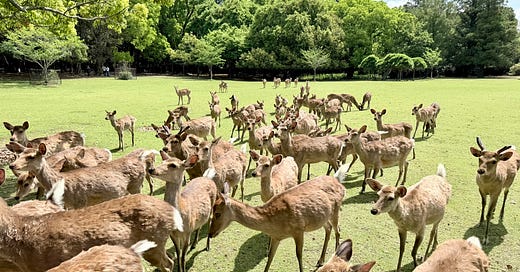


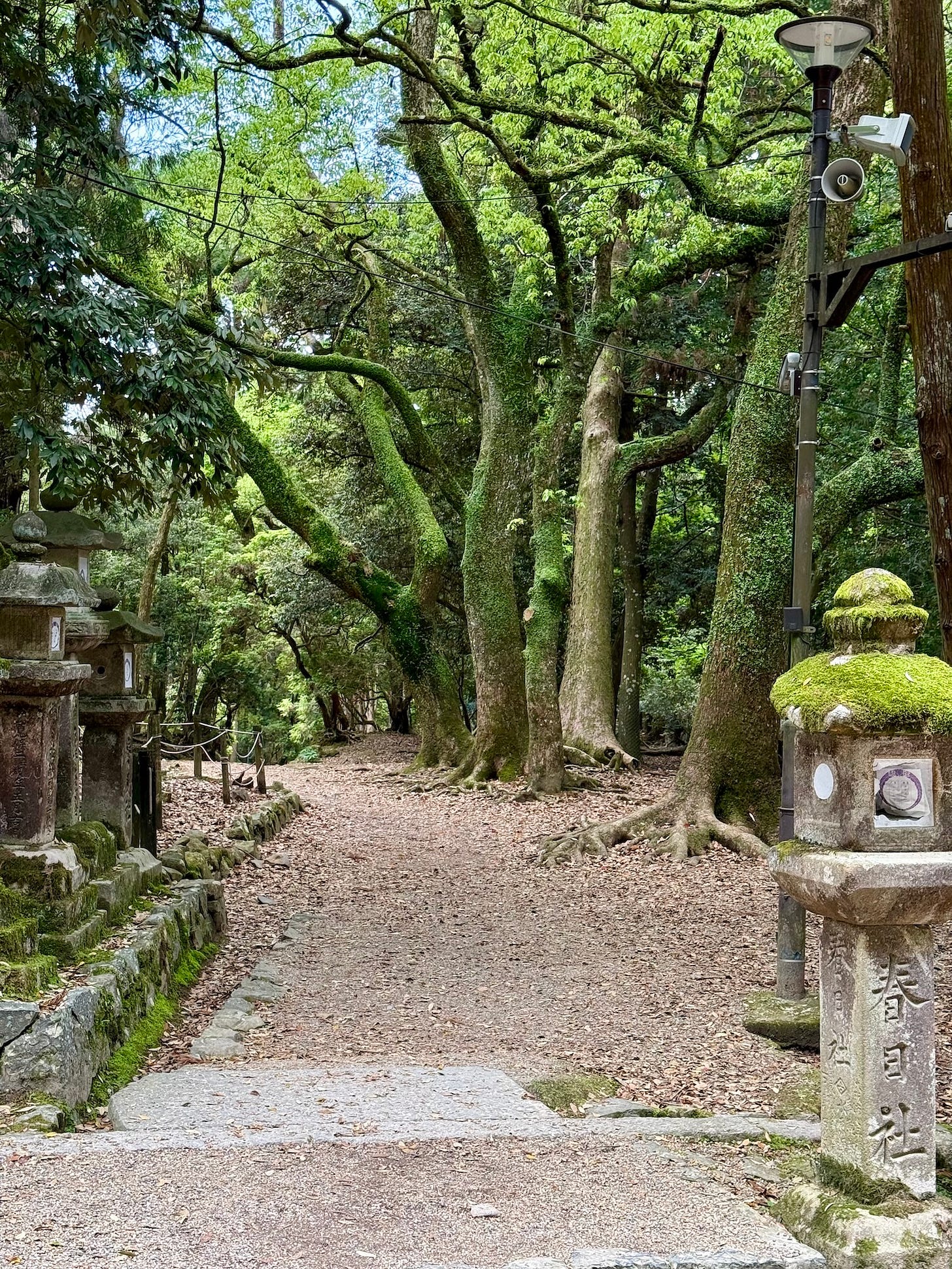
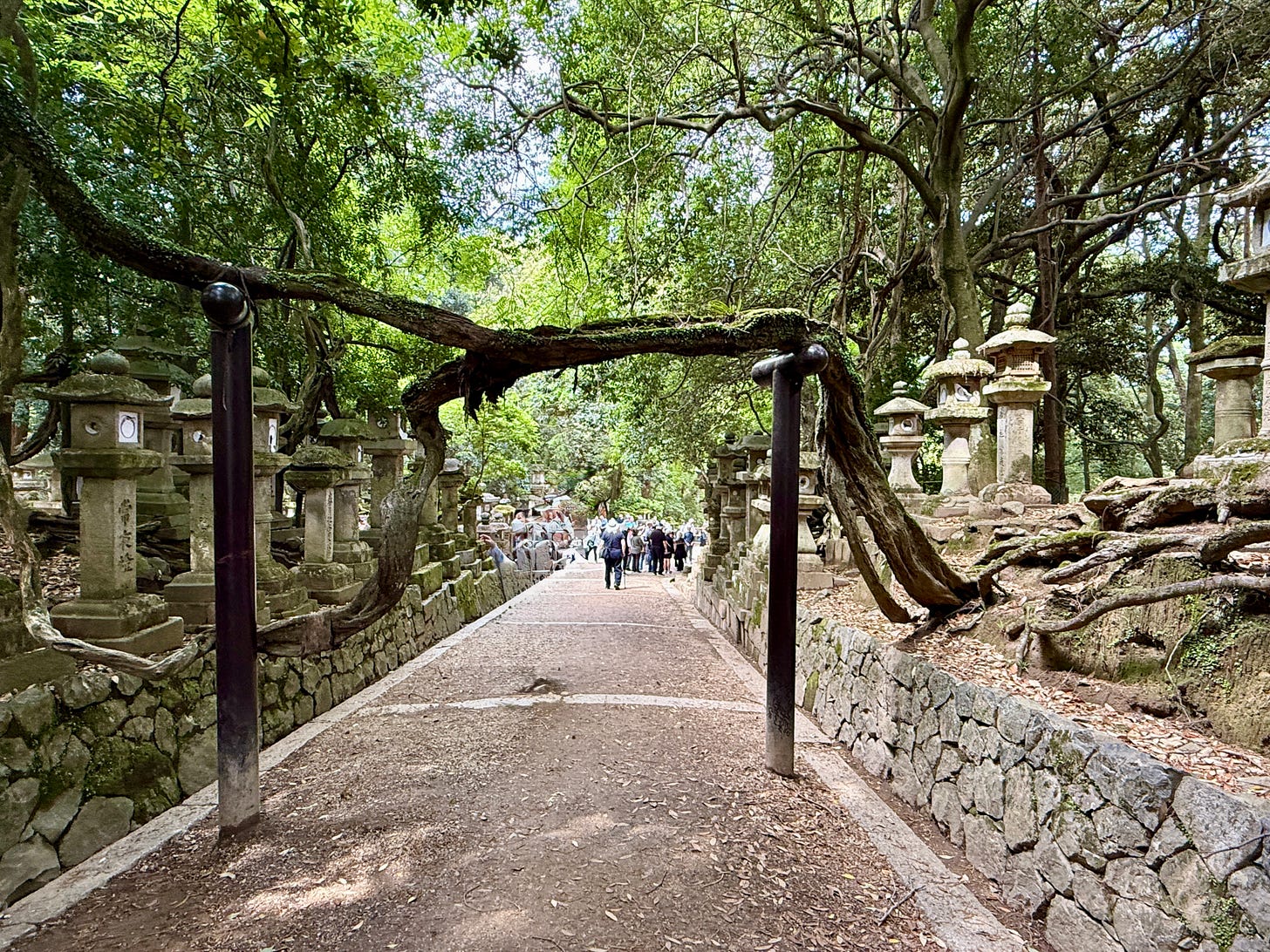
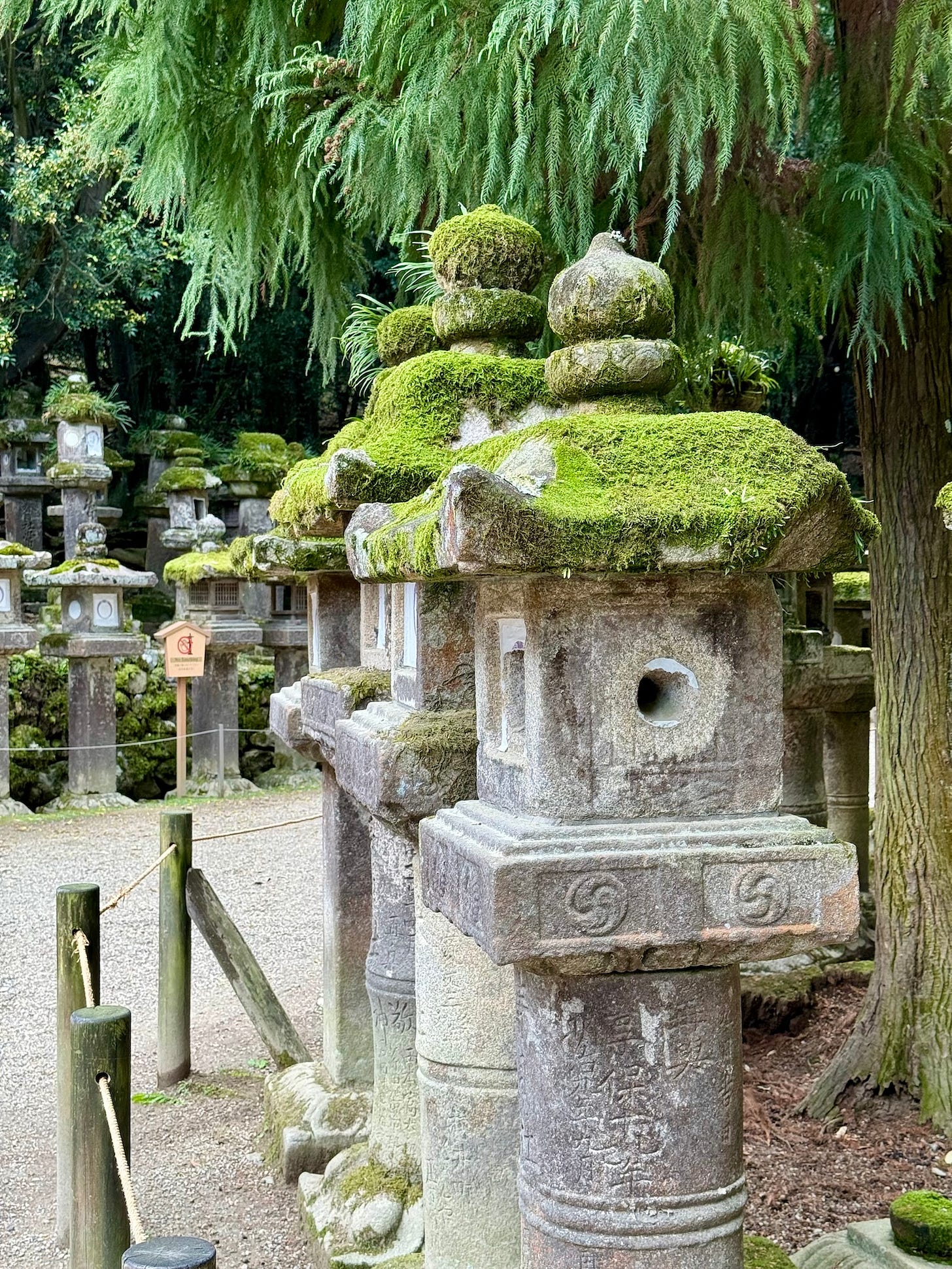
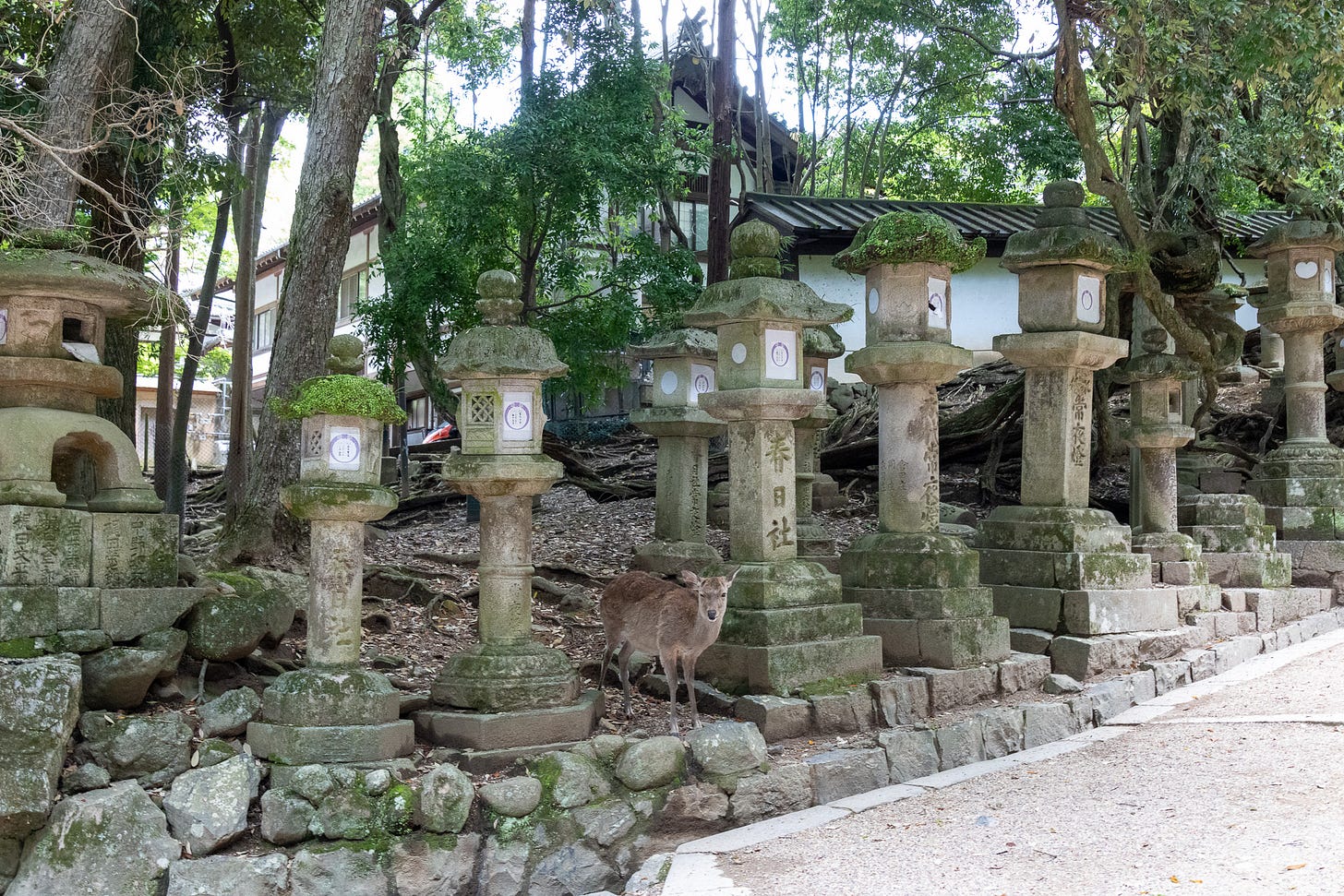
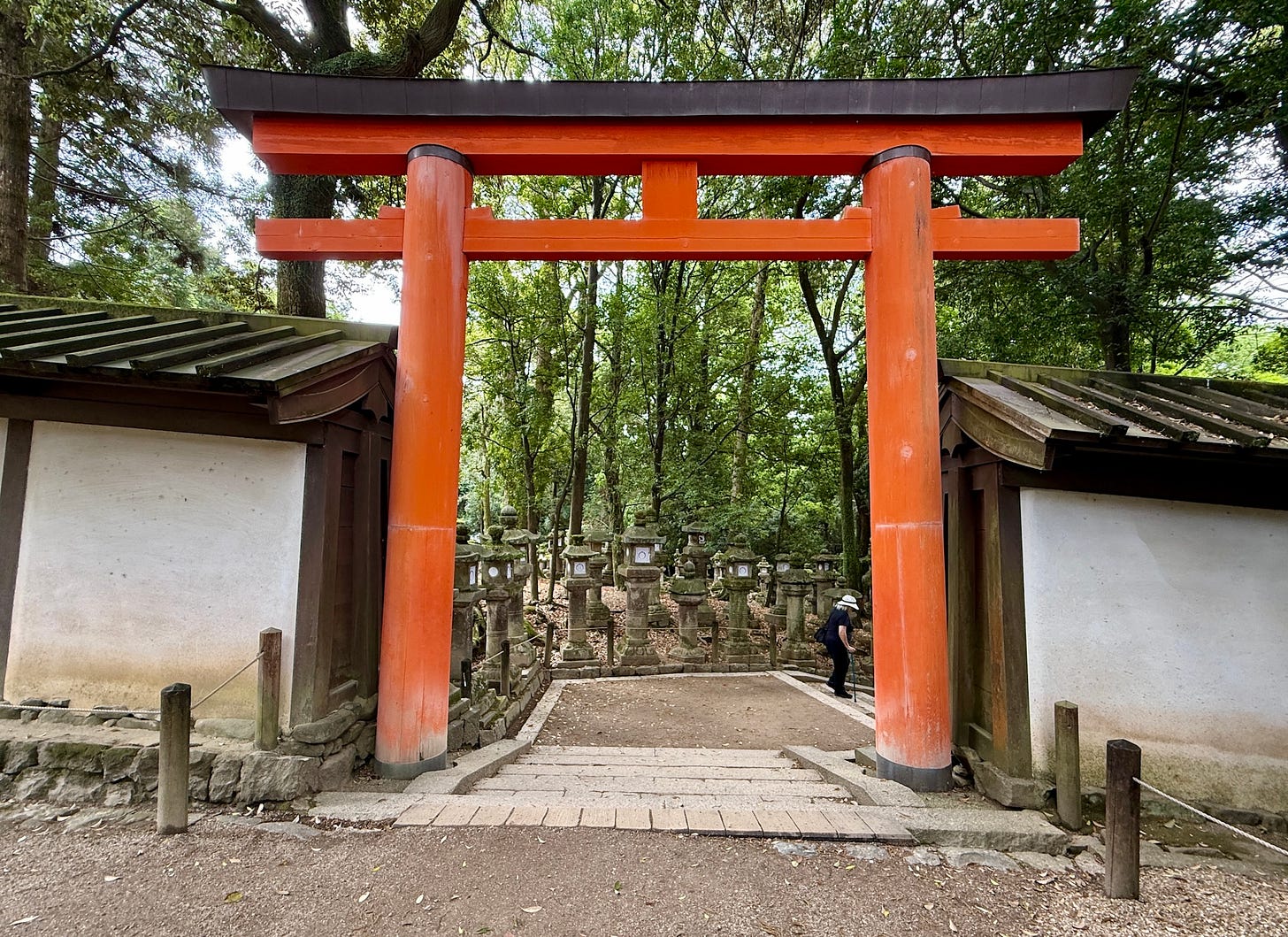
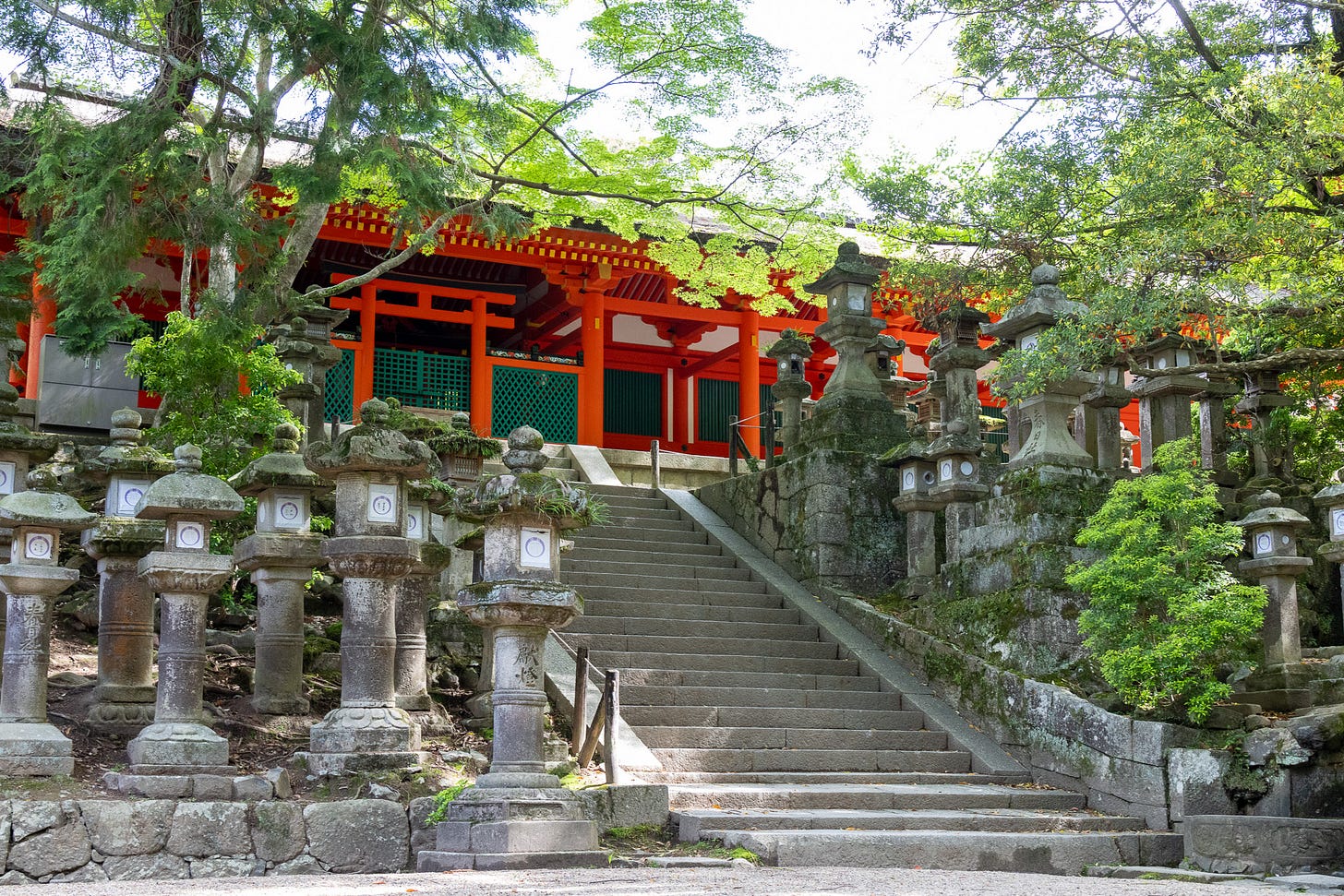
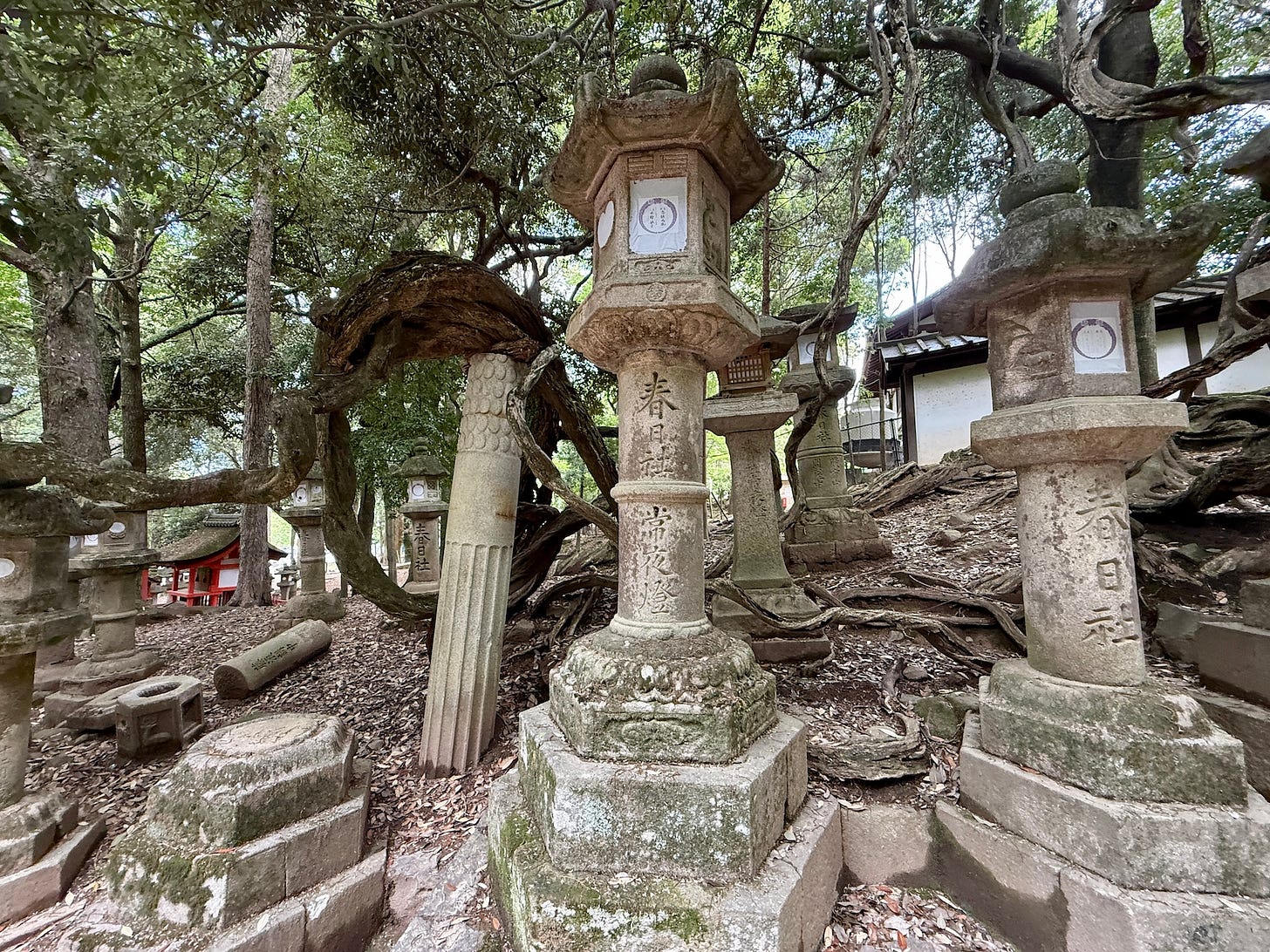
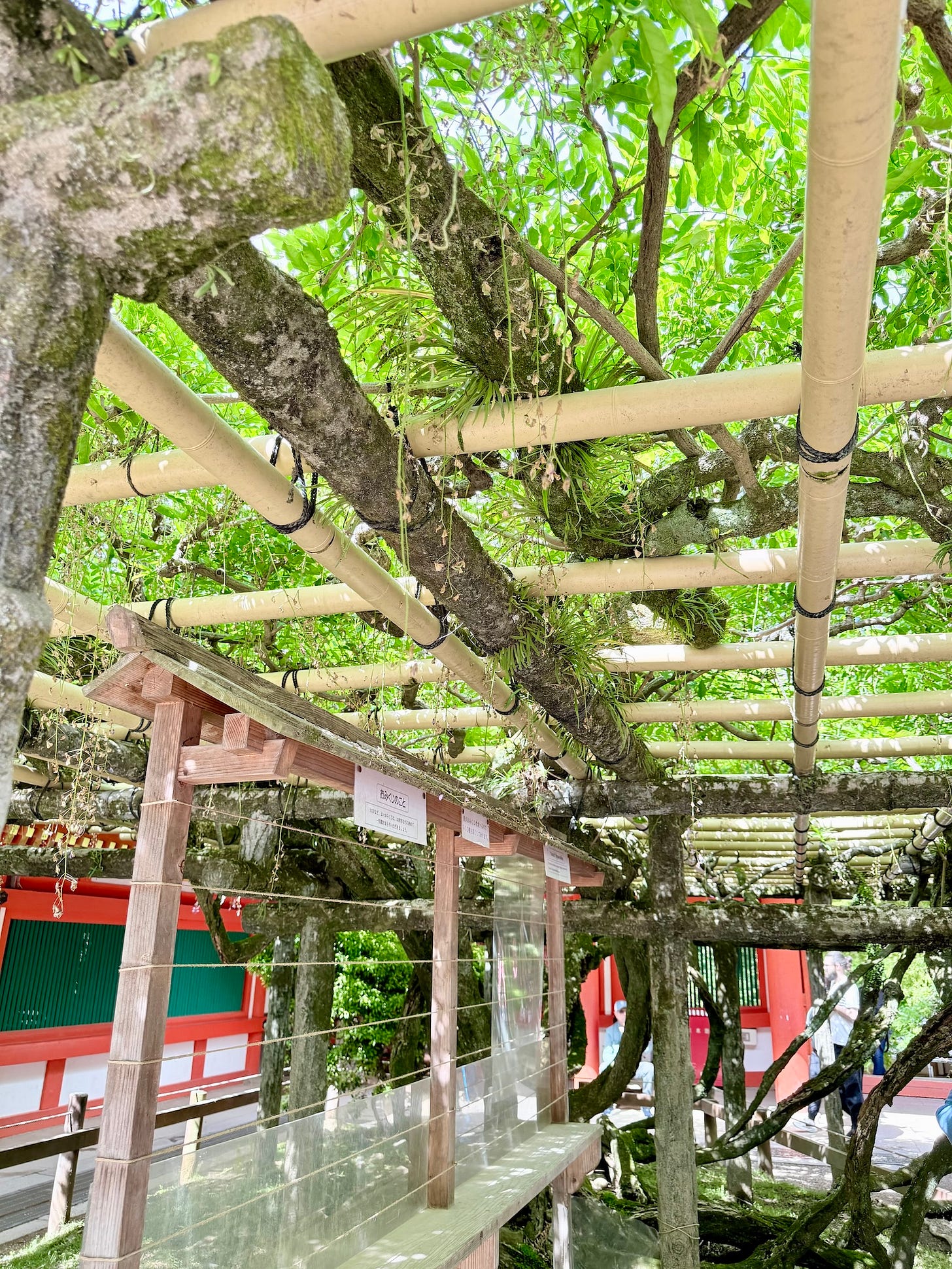
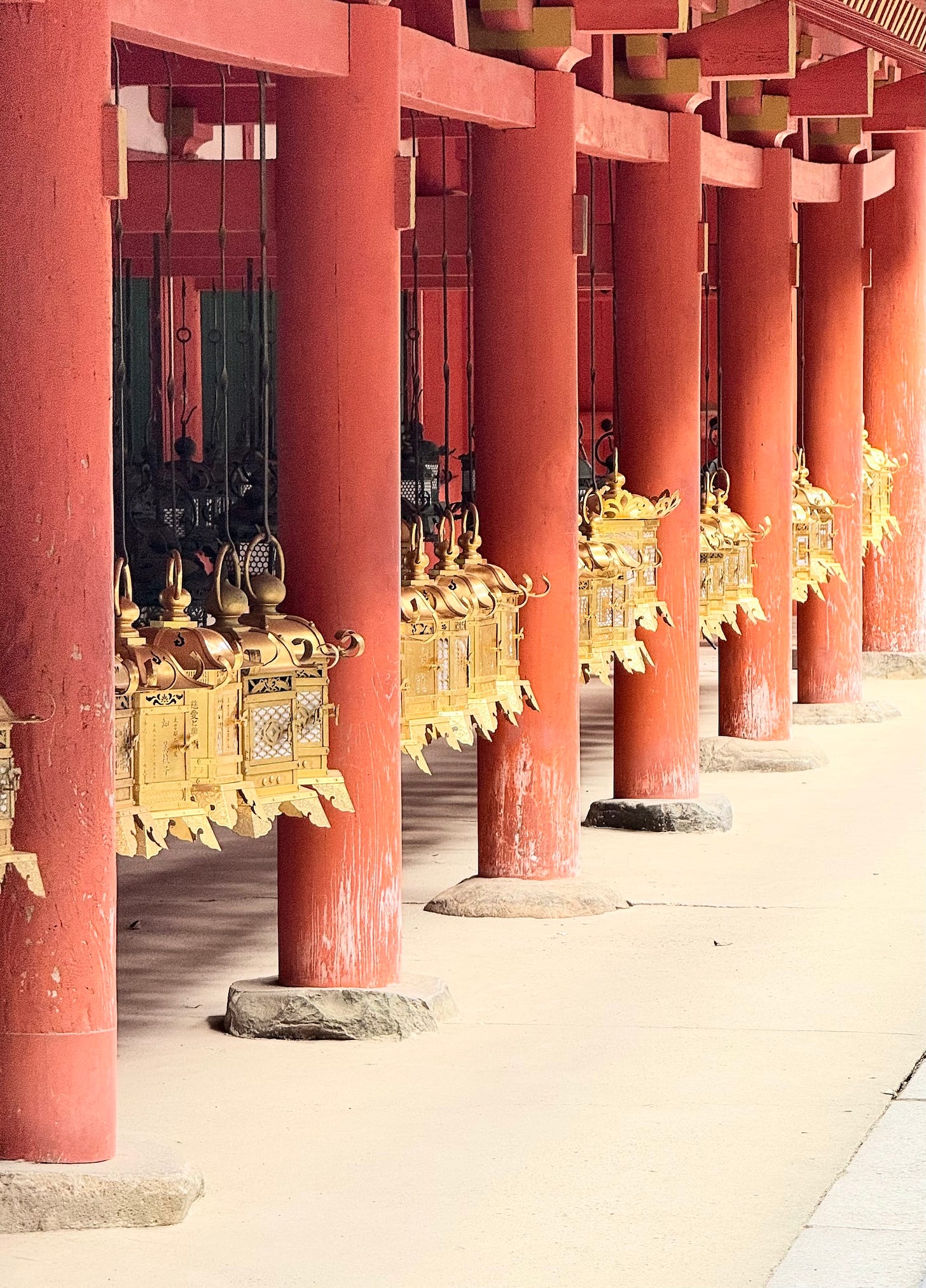
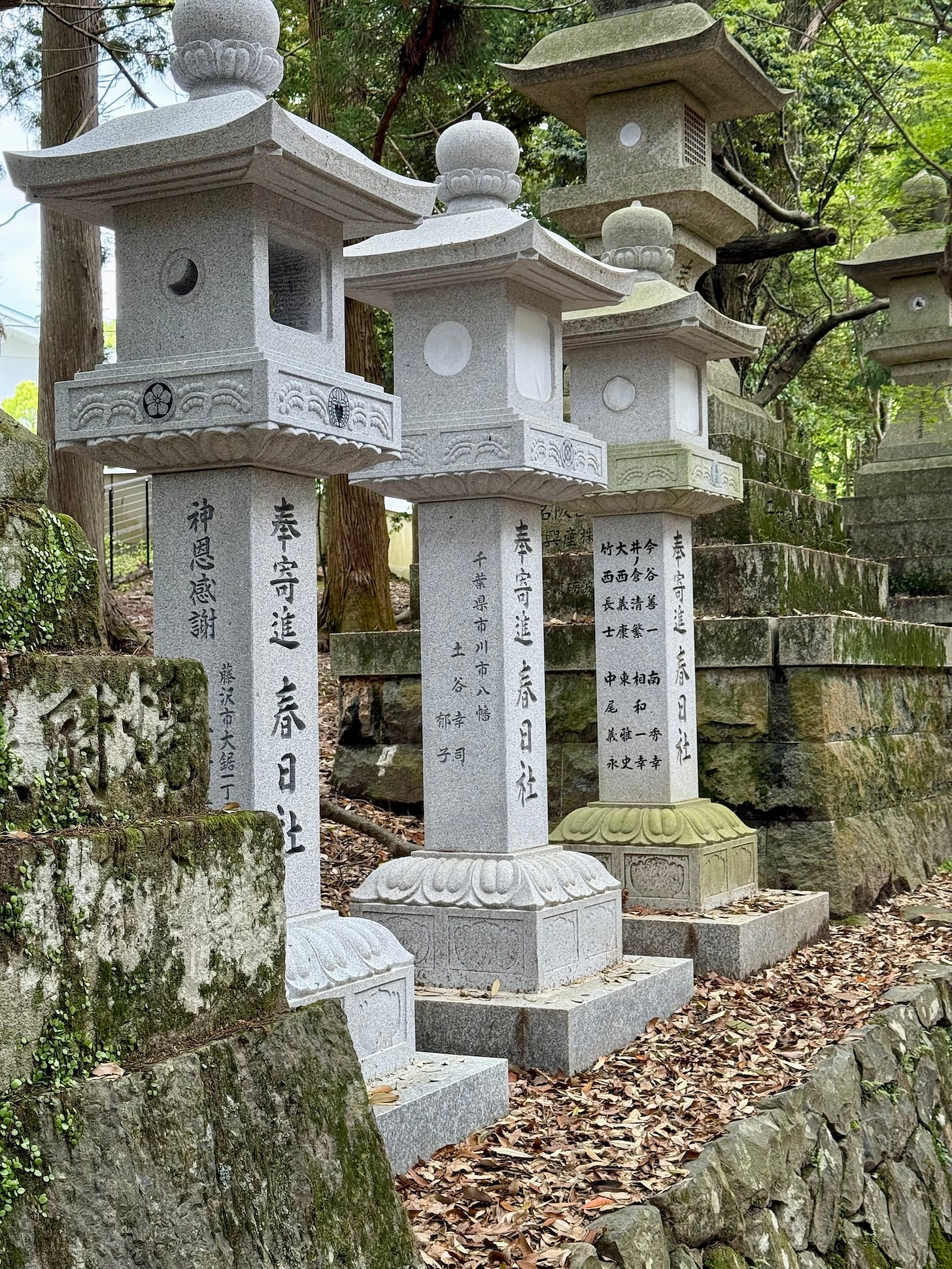
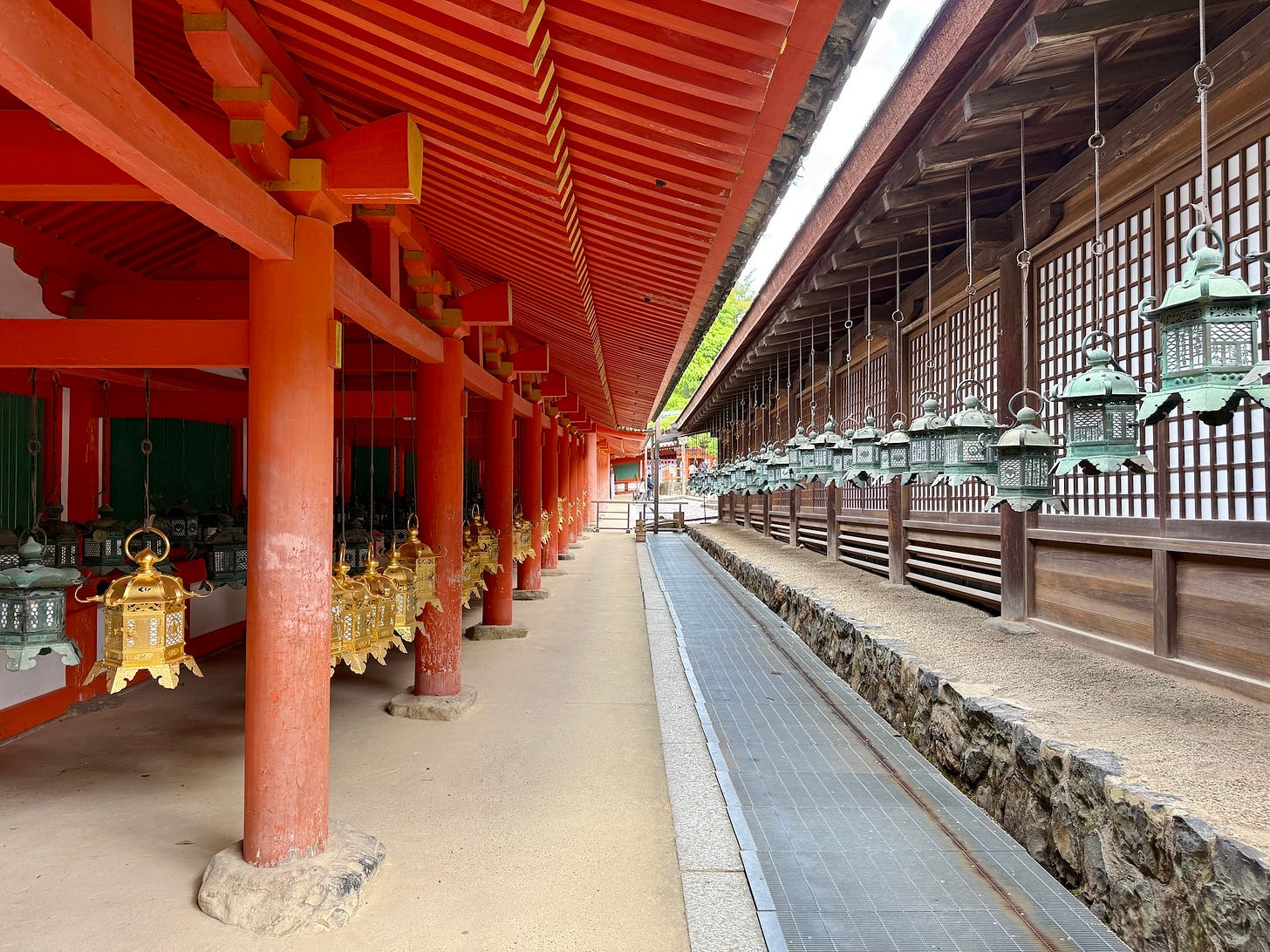
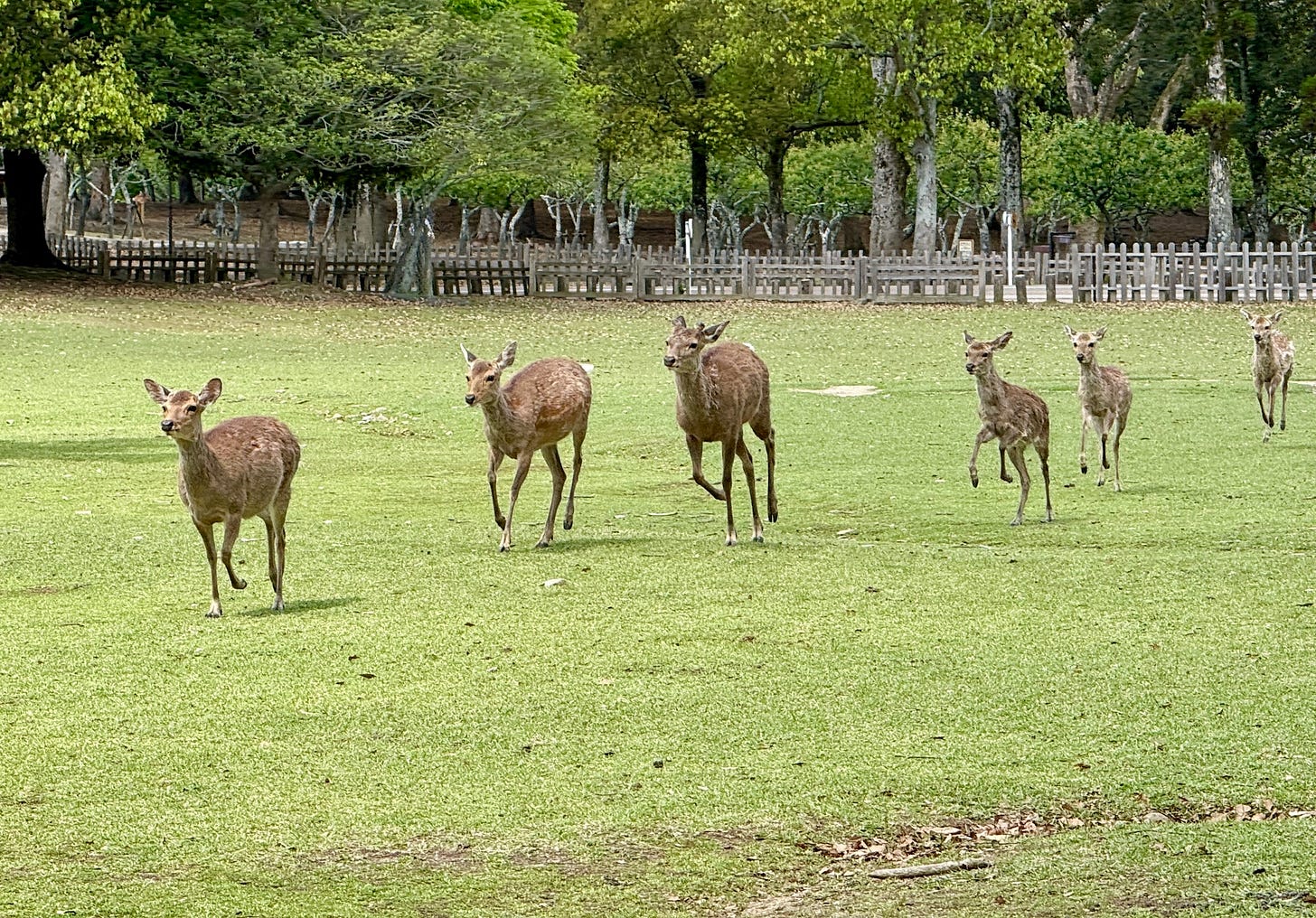
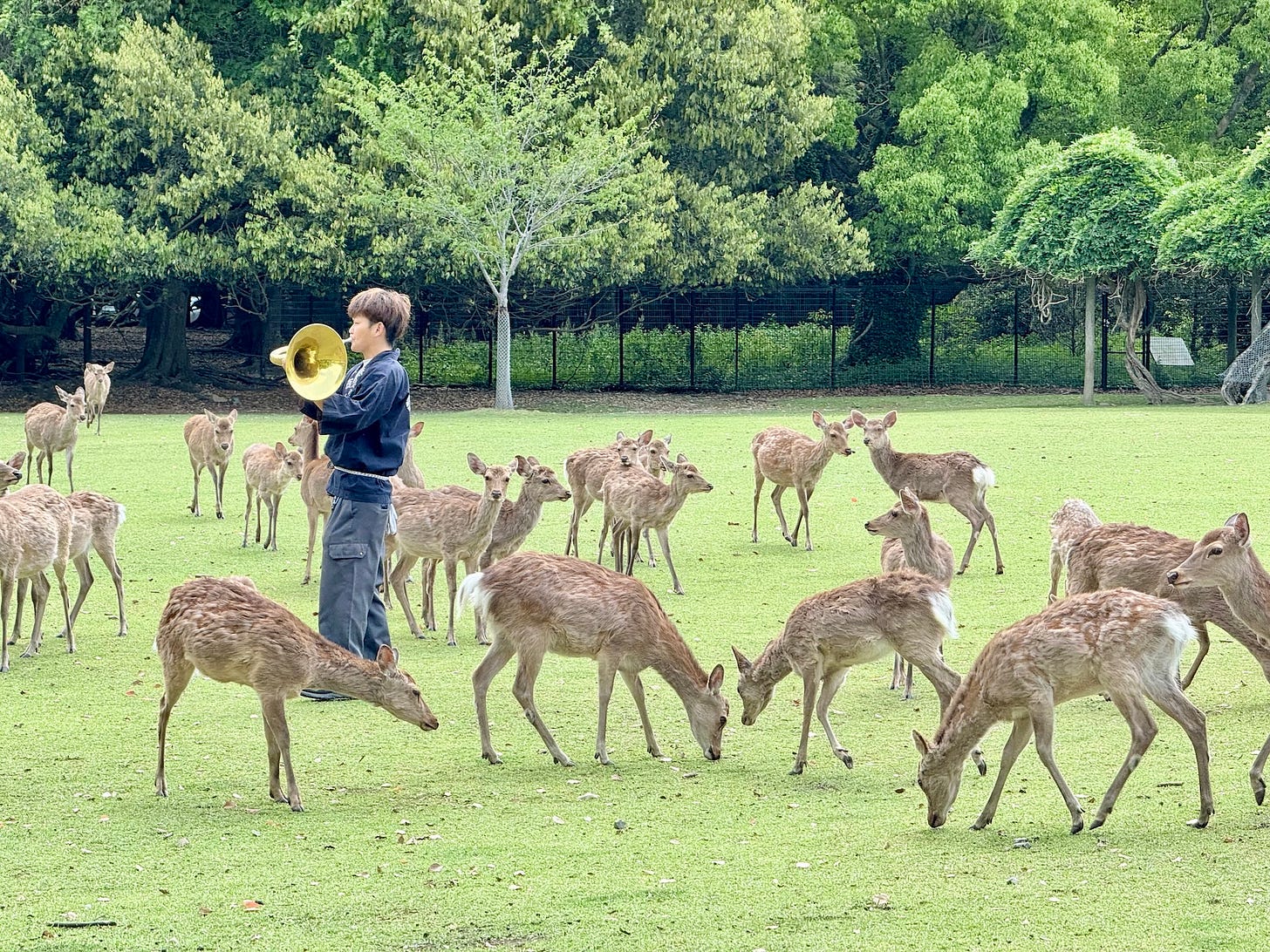

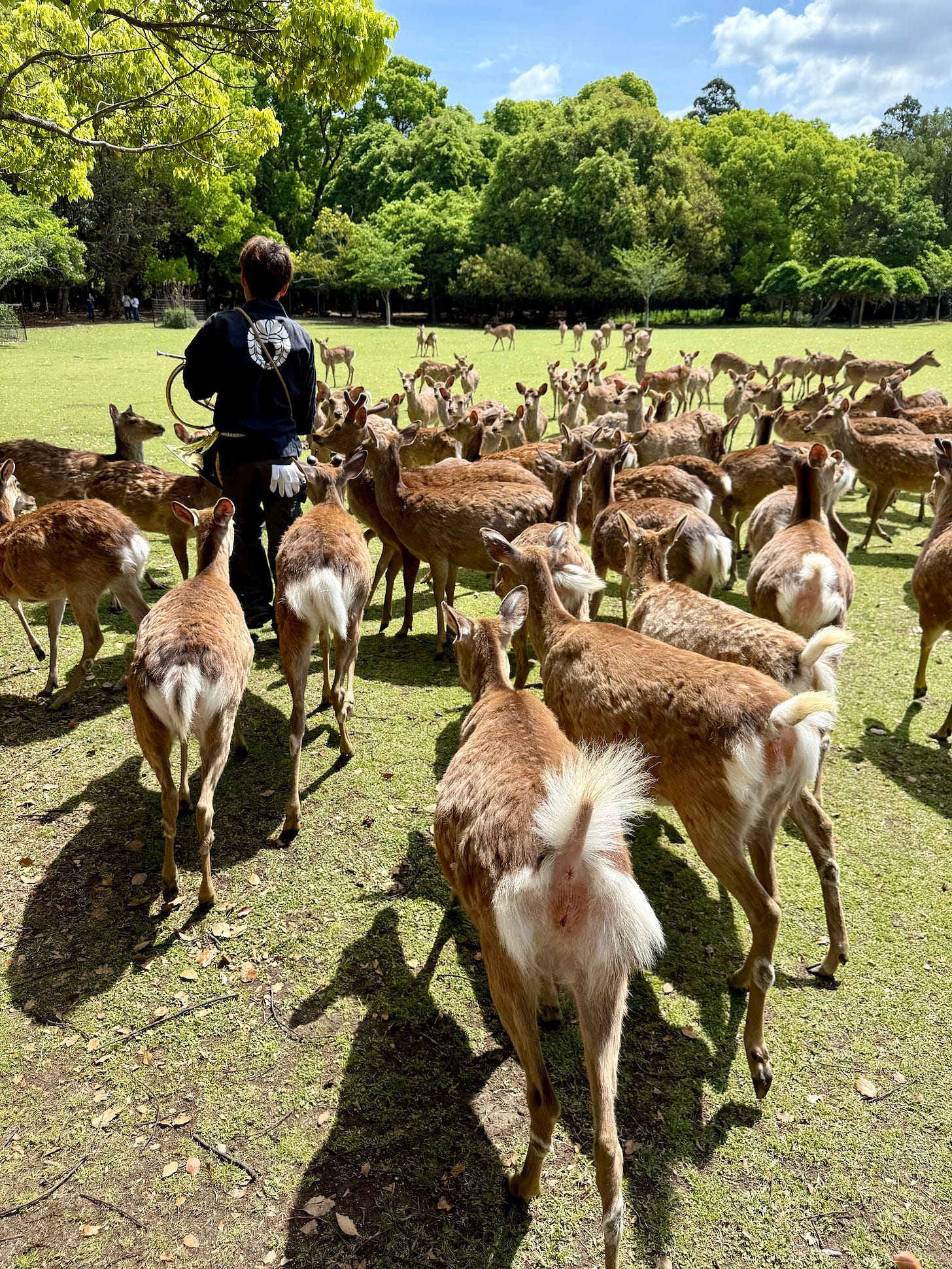
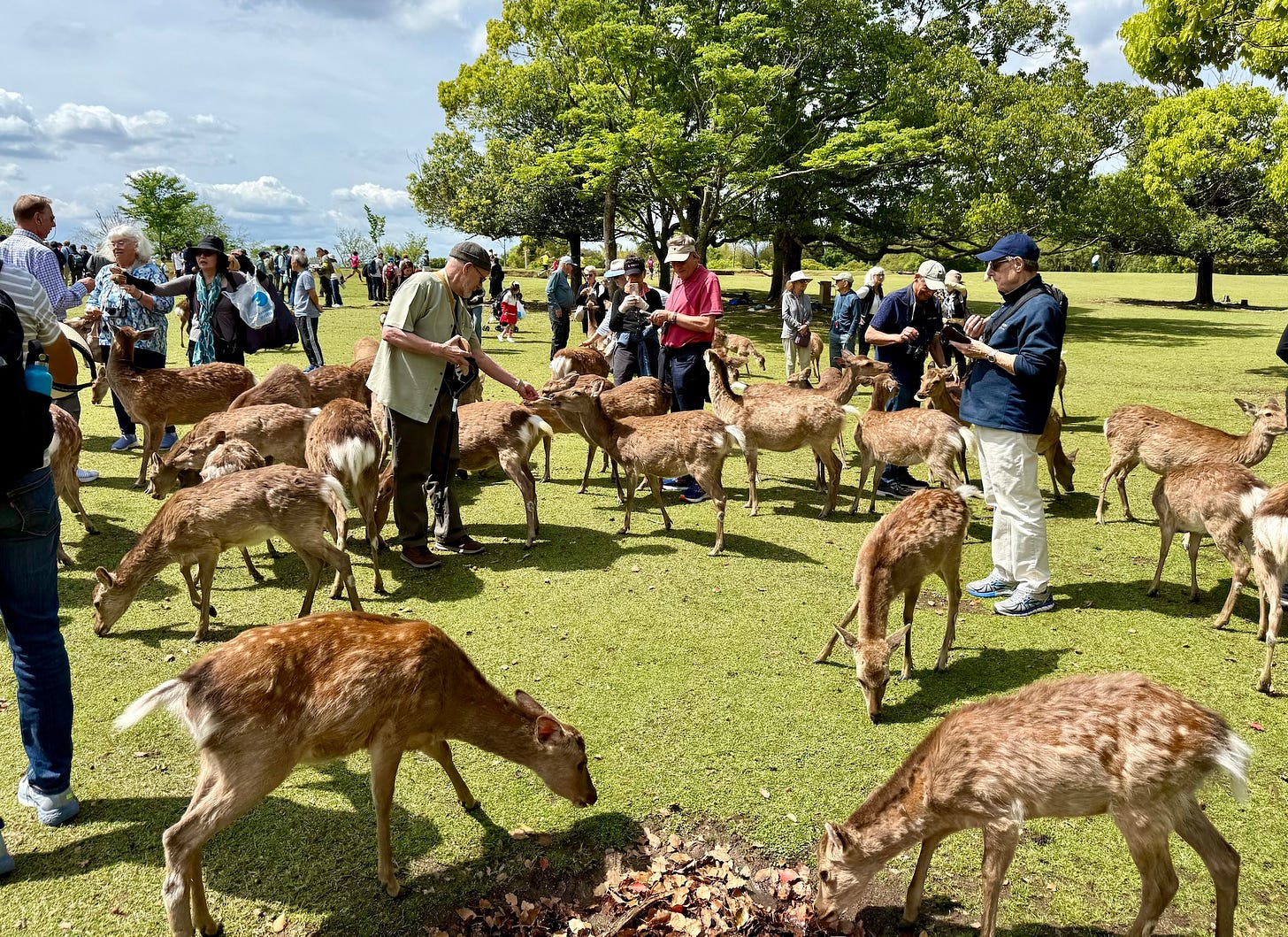
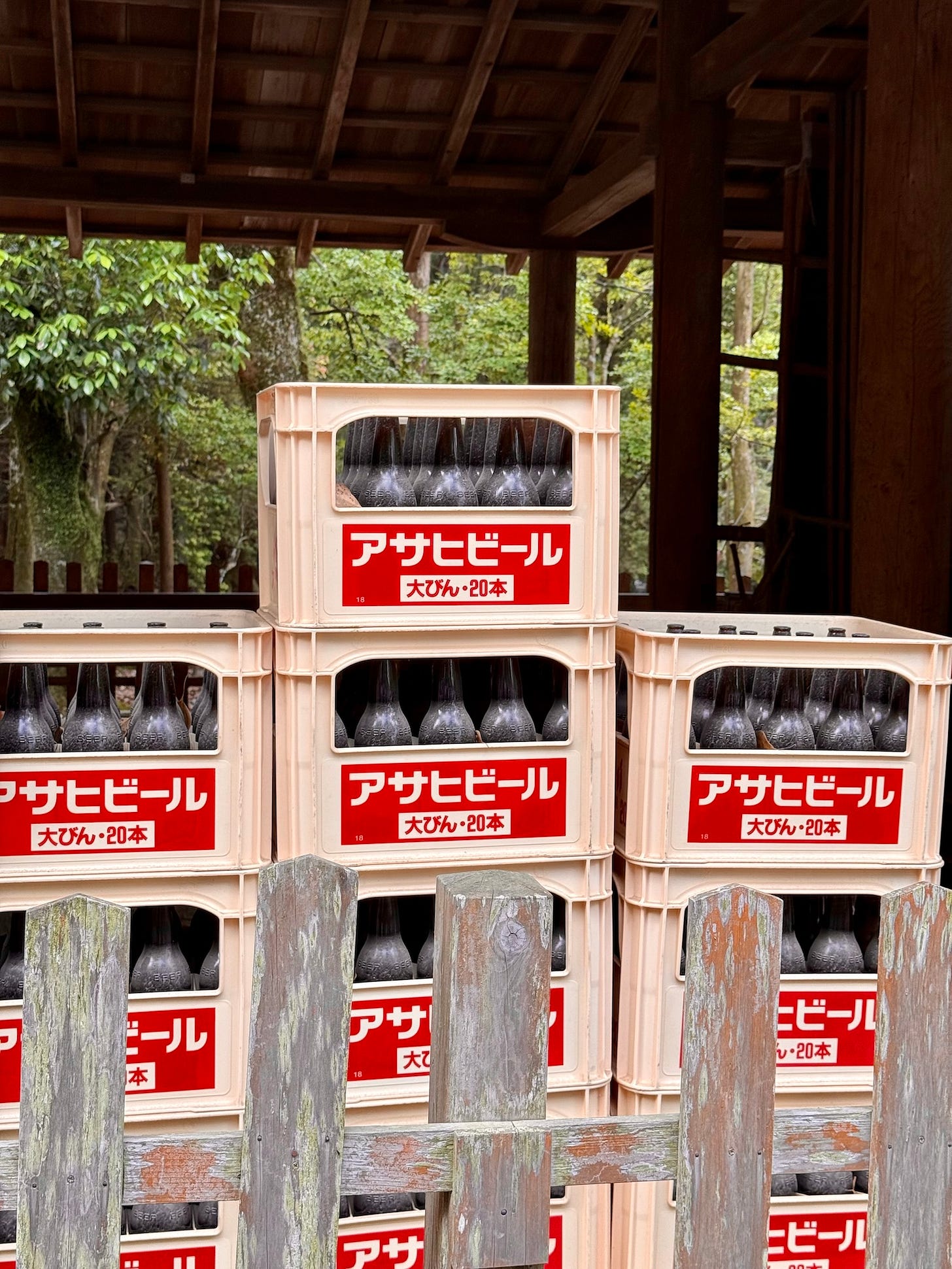
That would have been surreal to be surrounded by all those deer!